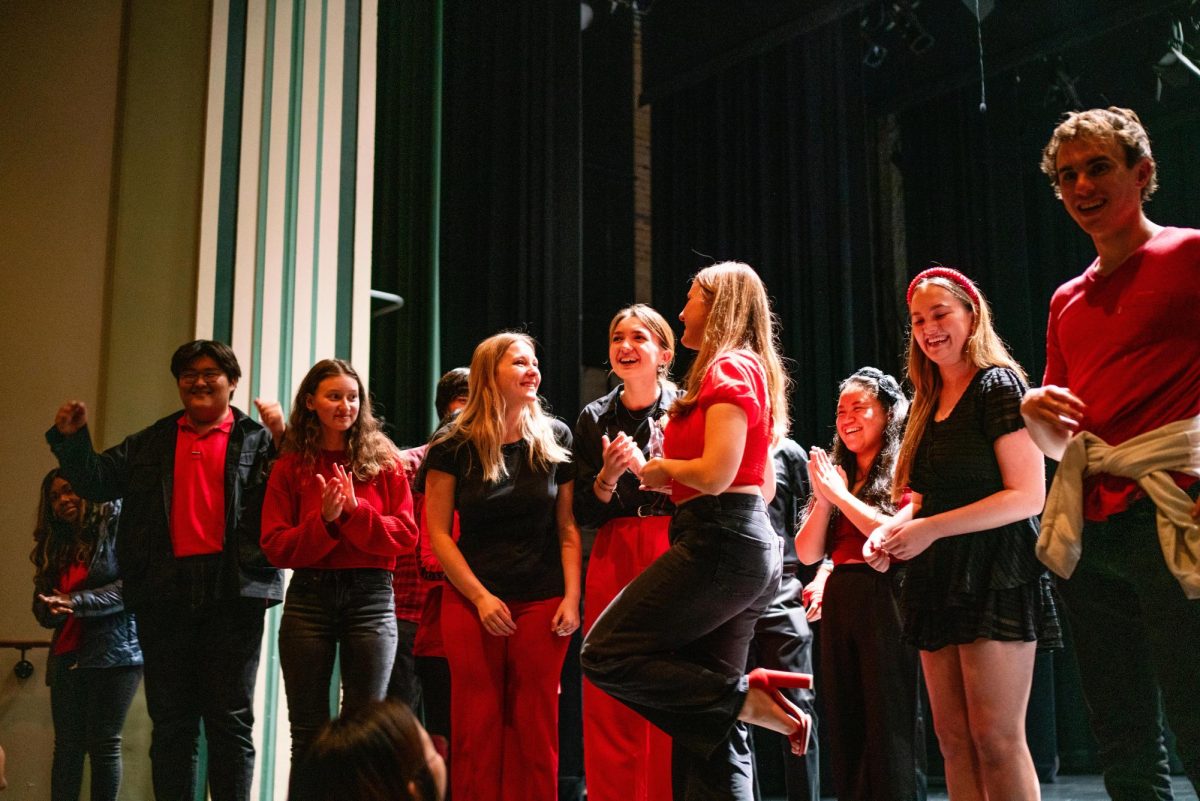Professors often warn students to turn their cell phones off before class.
If Klara Nahrstedt, a computer science professor, and her team of students and faculty can help it, teachers will begin encouraging their students to keep cell phones on during class.
Through a grant from the National Science Foundation, Nahrstedt and her team have set out to discover how the use of Mobile Learning Communities can enhance undergraduate students’ learning experience.
The team has begun developing a collection of Google Phone applications that will foster peer-to-peer sharing of educational tools.
Narhstedt said the Mobile Learning Communities will help demonstrate how mobile phones can help engage students in lessons.
Get The Daily Illini in your inbox!
“We wanted to understand what kind of educational applications would be useful if every undergraduate student would have a cell phone,” she said.
Narhstedt started the project last semester in her computer science class.
She told the class of mostly senior students to imagine what tools they’d need if they were freshmen and sophomore computer science students. The class then worked in groups of four to develop prototype GPhone applications.
“In some ways the model is ‘students for students,” Narhstedt said.
The groups competed to design the best applications. A team of judges chose the applications thought to be most useful.
Hyun Duk Kim, a graduate student in computer science, worked with his group to design the “G-clicker” application. The G-clicker acts as a mobile I-clicker, allowing instructors to ask their class quiz questions and receive responses.
Kim said he liked the idea of being able to use what he’d learned in the class as well as his personal experiences.
“It was a very exciting experience,” Kim said. “We could use everything that we learned in the class and even more than that.”
By the end of the semester, Narhstedt decided to further develop some of the winning groups’ designs. She gathered a team of seven students to help make the applications “more robust.”
The team will meet every week through March to develop three major applications: The G-clicker, a reminder application and a special microphone that would enable shy students to ask questions using the Google Phones.
Later in the semester, the applications will be tested by a group of freshmen and later by an undergraduate computer science class. If these tests go well, the team will discuss providing the phones to more classes, Narhstedt said.
A group of university professors is also helping Narhstedt with the project.
Each professor has a special focus in developing programs. Sam Kamin, associate professor in computer science, focuses on project’s the education technology aspect.
He advises the team on selecting the appropriate software needed for the applications.
Kamin said there are some that have had concerns with ideas like Mobile Learning Communities.
“People often think that people who work in education and technology have some idea that computers are going to replace teachers,” Kamin said. “I don’t think that’s it at all; I think [we’re] using these devices to increase the amount of communication that can happen in any given time, and that’s important.”
If the computer science department decides to implement the Mobile Learning Communities, it would provide cell phones to students.
The phones, Kamin said, will only use Wi-Fi connections. This means students will not have calling plans or services.
In the past, Kamin has worked with tablet computer software.
“The thing about phones, compared to tablet PCs, is that they’re much more portable and they’re cheaper,” Kamin said. Handing out 200 tablet computers to students would be pretty impractical, he added.
Obtaining enough Google phones for the computer science department may not be expensive at all, Nahrstedt said.
The group is working closely with Google and hopes the company will donate the phones for free. This will happen if Narhstedt can demonstrate the phone applications’ educational benefits.
Until then, Nahrstedt said the team will take the project step by step. They will start in computer science classes and possibly introduce the Mobile Learning Communities to other professors.








